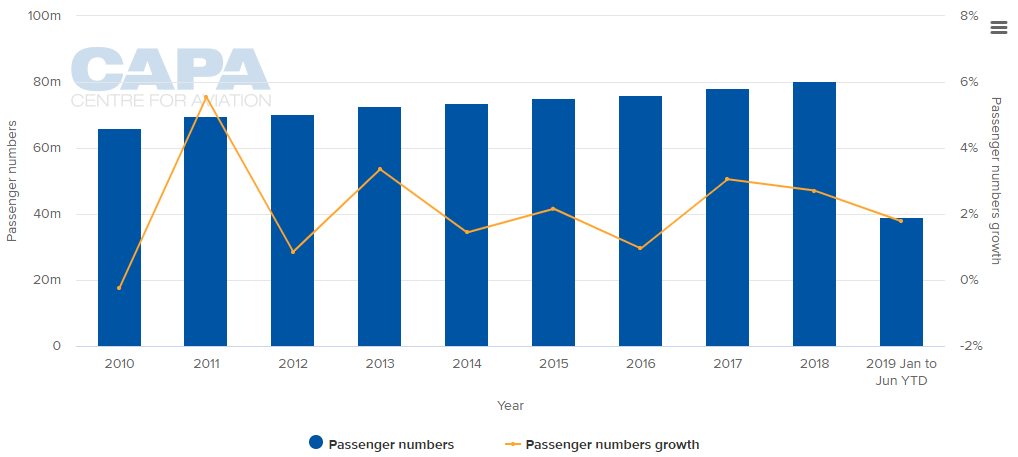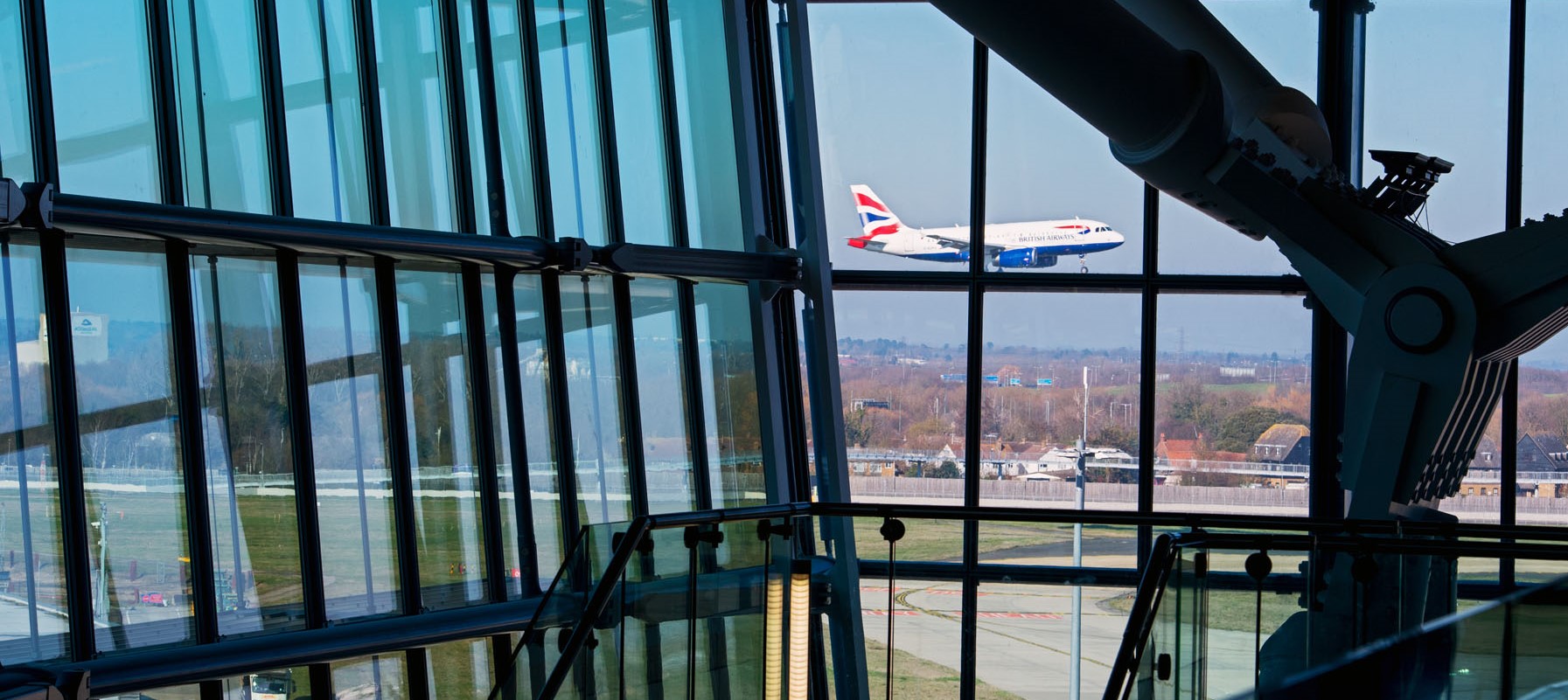The airport avoids discussing the small year-on-year traffic decline in July, describing the 7.75 million passengers it handled in the month as "helping to maintain steady growth similar to 2018 numbers".
While only a small decline, it is the first for some time and followed growth of +1.7% in June, +1.4% in May, +3.3% in April, +0.5% in March, +1.7% in February and +2.1% in January. In fact, the Jun-2019 performance had represented the 32nd month of consecutive growth. Together this all averaged out as a +1.8% growth across the first half of the year.
The airport describes the first half performance as having been underpinned by higher passenger satisfaction (based on the airport securing a place amongst the top 10 airports globally in the Skytrax awards, as well as 82% of passengers rating their experience as either "Excellent" or "Very Good") and an increased investment of over GBP412 million to improve passenger experience, efficiency and resilience, including trials of security scanners which allow passengers to leave laptops and liquids in bags.
CHART - London Heathrow airport has seen very stable growth this decade influenced by its significant capacity constraints Source: CAPA - Centre for Aviation and London Heathrow airport reports
Source: CAPA - Centre for Aviation and London Heathrow airport reports
A closer look at the first nine months performance by geographical market provides some really interesting insights into developments at Heathrow and highlights that growing North American traffic and increased African connectivity have been clear drivers of the passenger growth.
The European Union market is the airport's largest and accounts for over a third of its traffic (34.1% share) across the first seven months of 2019, but has recorded negative growth for a third successive month in July. After year-on-year declines of -2.1% in May and -0.7% June, a -1.8% fall was recorded in July, diluting the initial growth at the start of the year to bring a flat performance (+0.0%) for the year to date.
It is a very different story for the North American market, with the airport's role as a major trans-Atlantic hub perhaps growing in stature thanks to additional routes - Nashville, Pittsburgh and Charleston are among the new markets now served non-stop from Heathrow. This region accounts for almost a quarter of the airport's traffic (23.1% share) and passenger numbers across the first seven months has grown +4.7%. But, this is mainly a strengthening of demand on established routes with air transport movements only increasing 1.6% in the corresponding period.

The passenger growth in North America is second only to Africa, where improved connectivity has helped boost passenger demand so far this year. Recent developments include new routes to Durban, bigger aircraft deployed to Nigeria and increased frequencies to Johannesburg. This has boosted demand by +8.1% on the back of a +7.4% increase in movements.
Across the rest of the world the performance is rather muted. Latin America is up +2.9% across the first seven months of 2019 and the Asia/Pacific market up +0.4%, but the rest of the world falls into negative growth territory with non-EU Europe down -0.2%, domestic UK down -0.5% (despite a +3.3% growth in Jul-2019 buoyed by new summer routes to Newquay, Isle of Man and Guernsey), and the Middle East down -1.4%.